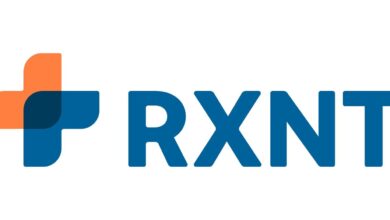Harnessing the power of predictive analytics to contain benefits costs

As health care costs continue to escalate — expected to increase by close to 6% in 2024 — benefits leaders face the daunting challenge of managing expenses while ensuring employee wellness. In this uphill battle, predictive analytics emerges as a powerful ally, transcending mere buzzword status to become a practical solution backed by tangible results.
By harnessing advanced analytical techniques, employers and their benefits advisors can unlock the potential of data-driven insights, empowering them to make well-informed decisions and implement proactive strategies for cost containment.
In this article, we’ll discuss how predictive analytics offers a comprehensive toolkit to forecast risks, optimize spend, and promote a healthier, more productive workforce.
Proactive health management: How predictive analytics can forecast & mitigate health risks
One of the key applications of predictive analytics in the benefits realm is identifying clinical or population health risks. By utilizing sophisticated algorithms, employers can proactively use clinical analytics to forecast the likelihood of which members might develop conditions such as type 2 diabetes, chronic kidney disease, stroke, or endocrine disorders.
For instance, the best predictive health analytic solutions are powered by machine learning algorithms that forecast members likely to develop these conditions.
- Early identification of risks allows employers to implement preventive strategies, slowing or halting disease progression.
- Outreach programs, care navigation partners, condition-specific programs, or expert medical opinion services can be tailored to support at-risk members, providing them with the necessary guidance and resources to maintain their wellbeing.
Moreover, predictive analytics can identify individuals with poorly managed chronic conditions or those with multiple co-morbidities.
- For example, by analyzing data on inpatient admissions, readmissions, or emergency room visits for chronic conditions like diabetes, hypertension, angina, or asthma, employers can pinpoint members who are struggling to manage their conditions effectively. This signals that these members are at risk for adverse outcomes and further disease progression.
- Predictive health analytic features can flag these risks, enabling employers to implement targeted intervention strategies to slow disease progression and better manage employees with complex clinical profiles.
Strategizing health & wealth: Leveraging predictive analytics to optimize benefit impact
Predictive analytics can also play a crucial role in optimizing benefits spend and mitigating financial risks. By combining the power of financial and clinical data, predictive modeling tools can stratify an employer’s population from low to high risk, offering a comprehensive view of their workforce’s health needs – from those thriving in wellness to those grappling with acute conditions, chronic diseases, multiple comorbidities, or complex illnesses.
This holistic understanding empowers employers to develop tailored intervention strategies and allocate financial resources with precision, addressing the areas of greatest need and risk.
It’s here where the population health goal becomes twofold: to promote wellness and prevent illness among the healthy segment while simultaneously creating robust programs that enable those with diseases to manage and navigate their conditions optimally.
Moreover, these advanced analytical tools extend their reach into the realm of financial risk mitigation. By providing insights into future financial risks, employers can proactively secure appropriate reinsurance or stop-loss policies, shielding themselves from the potential burden of unexpected and substantial claims.
Cutting health care waste: How Predictive analytics identifies low-value care & enhances treatment efficiency
Predictive analytics can also play a role in identifying low-value care, defined as care that delivers little to no benefit to patients or is delivered outside of evidence-based medical guidelines or clinical best practices.
By using data and analytics to identify these services within their populations, employers can engage in constructive conversations with their third-party administrators (TPAs) or health plan partners. Additionally, for employers seeking value-based care models, this data can help differentiate provider networks based on their adherence to evidence-based practices and the delivery of high-value care.
Embracing predictive analytics: Transforming benefits management in an era of rising costs
The potential of predictive analytics to transform benefits management is immense. As we navigate an era of rising health care costs and changing workforce demographics, embracing these tools is not just advisable; it’s essential. Employers and benefits advisors should consider partnering with a health data analytics solution to explore how predictive analytics can be tailored to their specific needs.
By taking proactive steps today, organizations can ensure a healthier, more productive tomorrow, making predictive analytics a cornerstone of modern benefits strategy.
Nicole Belles has over 20 years of experience in the creation and delivery of health care data and analytic solutions. Throughout her career, she has been using data and analytics to address the strategic business needs of all stakeholders in the health care ecosystem, including health plans, employers, pharmacy benefit managers and providers. She has worked in multiple disciplines, including consulting and practice leadership, methodologies and predictive analytics, and product management.



